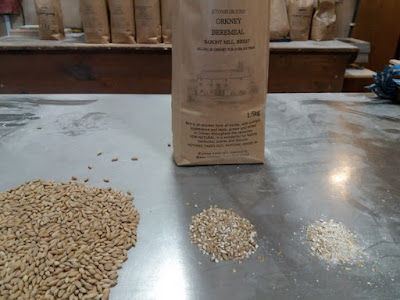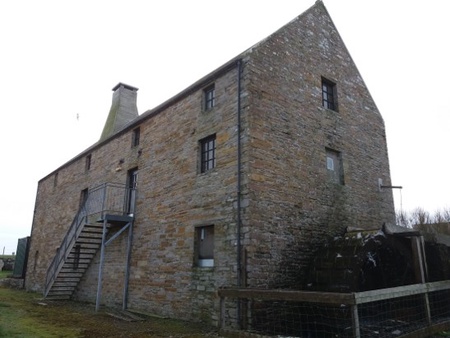On Wednesday 6th March 2019 Karen Scott visited the Barony Mill to assist in dehulling and flaking and flouring some barley that has been grown to use in a human intervention study run from the Rowett Institute, University of Aberdeen.
This particular barley variety was grown at the James Hutton Institute, Dundee and was selected because it has a slightly higher than normal β-glucan content (4.5% versus about 3%). β-glucan is a soluble fibre known to help with cholesterol-lowering. Indeed foods containing β-glucan can use a Health claim wording – “Intake of at least 3g of β-glucan per day helps to lower serum cholesterol”.
Using higher β-glucan barley means that instead of consuming 100g/day of oats or barley to achieve the 3g β-glucan intake, only 65g need to be consumed. This equates to a medium-sized bowl of porridge, or a small bowl plus 1 barley tortilla – a much more manageable amount. In our study, the volunteers will consume 65g of barley for 6 weeks, and the data on cholesterol, blood pressure and also gut bacterial activity will be compared with a second 6-week period when they consume no foods containing β-glucan.
Unfortunately just growing the barley and combining it is not enough. After harvesting, the barley had to be processed into a food-grade product to be used in the human study. This helps to release the soluble β-glucan fibre from inside the barley grain. Although to us 450kg of barley is a lot, to many mills dealing with 100s tonnes of barley this was not worth bothering with. Enter The Barony Mill and miller Ali Harcus who was more than happy to help. After a few phone calls, emails and the help of Orcadian transport company McAdie and Reeve, the barley arrived in Orkney.

At the mill, Ali fired up his kiln to dry the barley down to <10% moisture for longer term storage and the following day, with me in attendance, the processing started. First the barley was dehusked, with the chaff kept to burn in the kiln for the next drying round. Then the stones were used to grind it into smaller pieces. About half of this was then passed through the ‘bruiser’ and bagged as the barley flakes that the volunteers will eat as porridge. The remainder was further refined into a fine barley-meal, and also into flour. These two products will be used to make barley tortillas, which the volunteers can consume at lunch/dinner.
Back in Aberdeen with samples of each of the products, some test cookery ensued with some ‘willing’ taste-testers recruited. The barley porridge had a mixed reception. It tastes quite different to oat flake porridge but with a spoon of honey yoghurt on top, or a spoon of jam or maple syrup depending on personal preferences it makes an enjoyable breakfast. The flour was used to make some lovely 50% barley shortbread and the mixed flour/meal tortillas make great wraps replacing bread for lunchtime sandwiches. The volunteers recruited to the study will enjoy this healthier alternative and we will wait and see if it has the desired effect to lower their cholesterol levels, and also whether it has any effect on the activity or composition of their gut bacteria.


